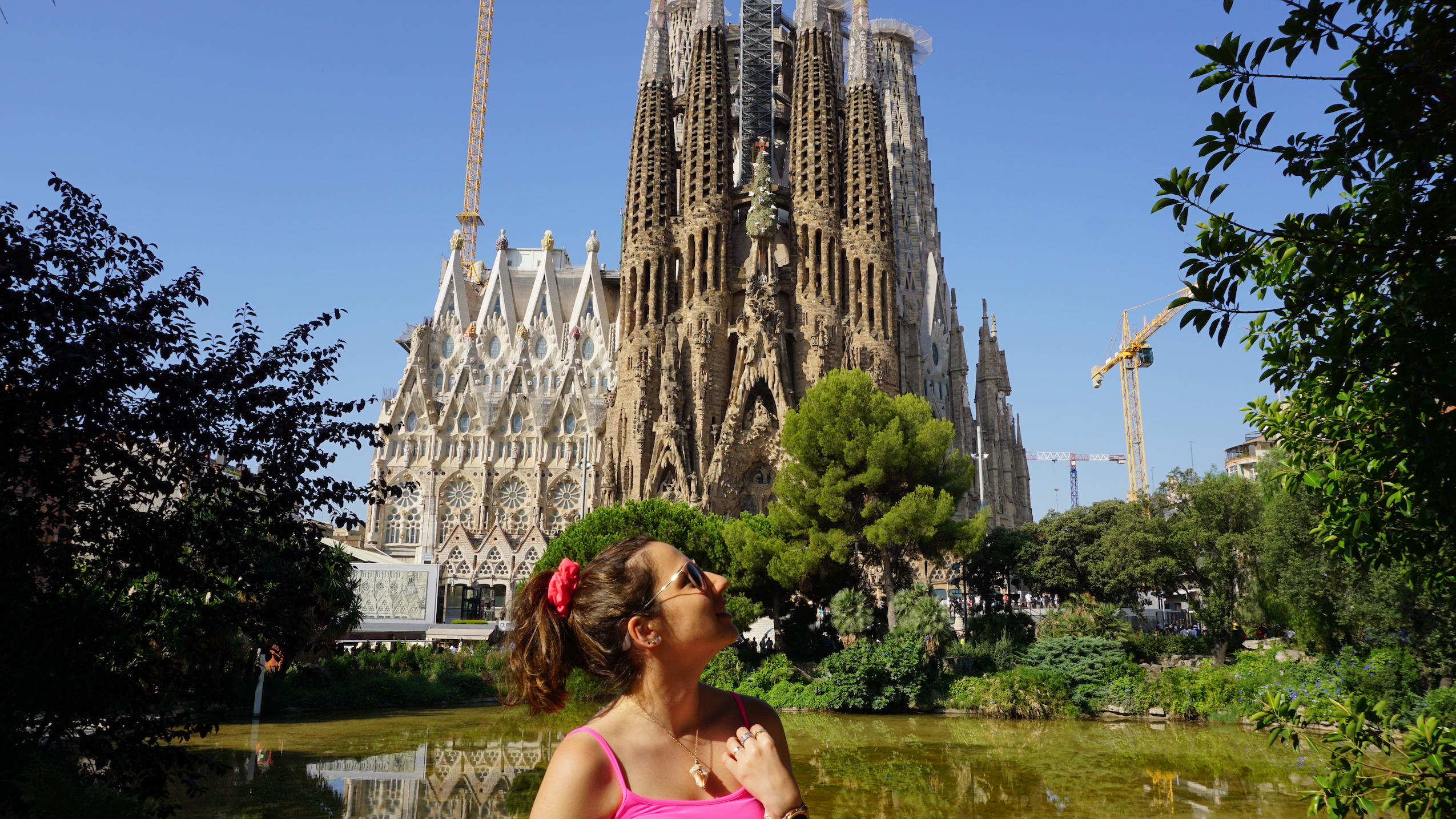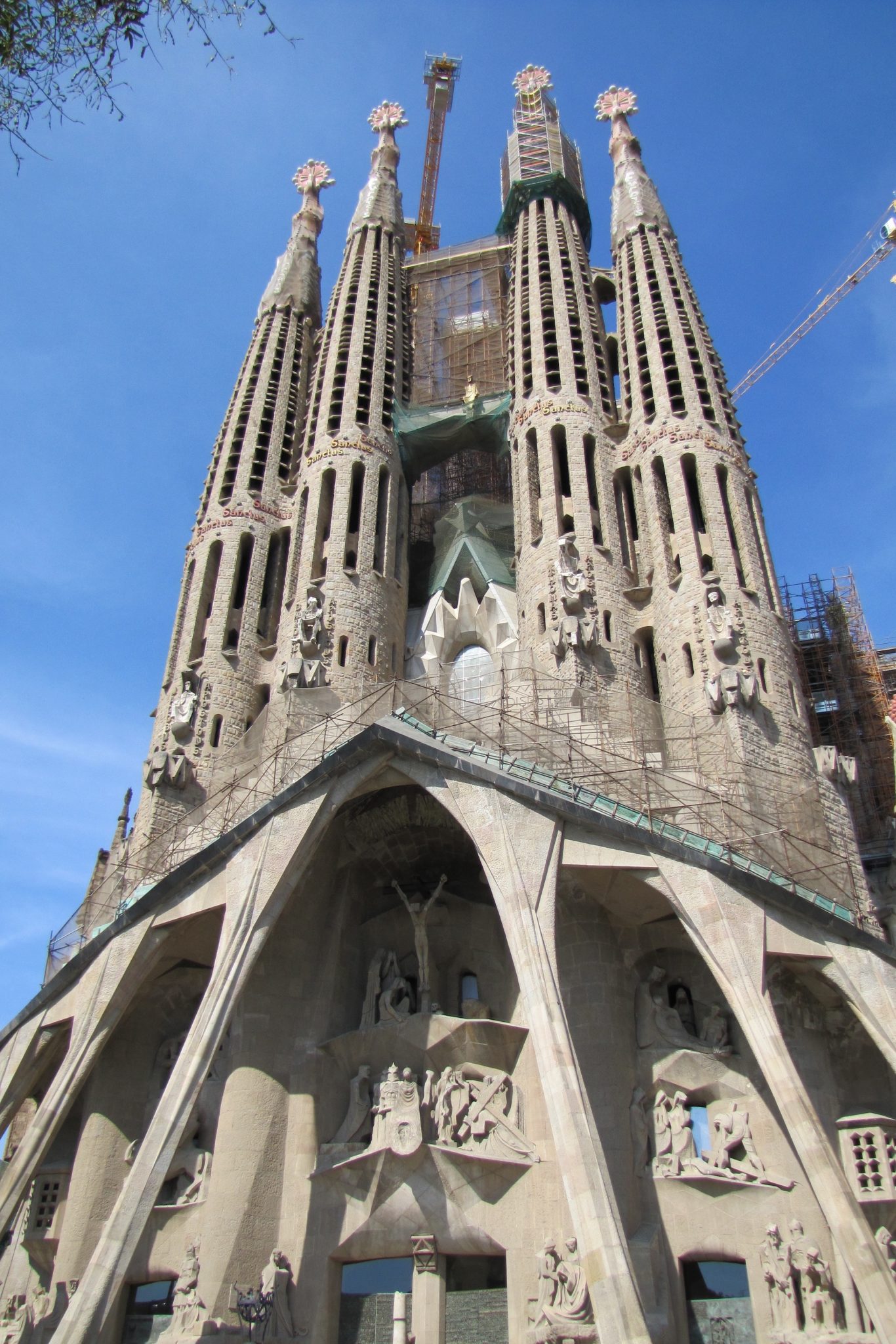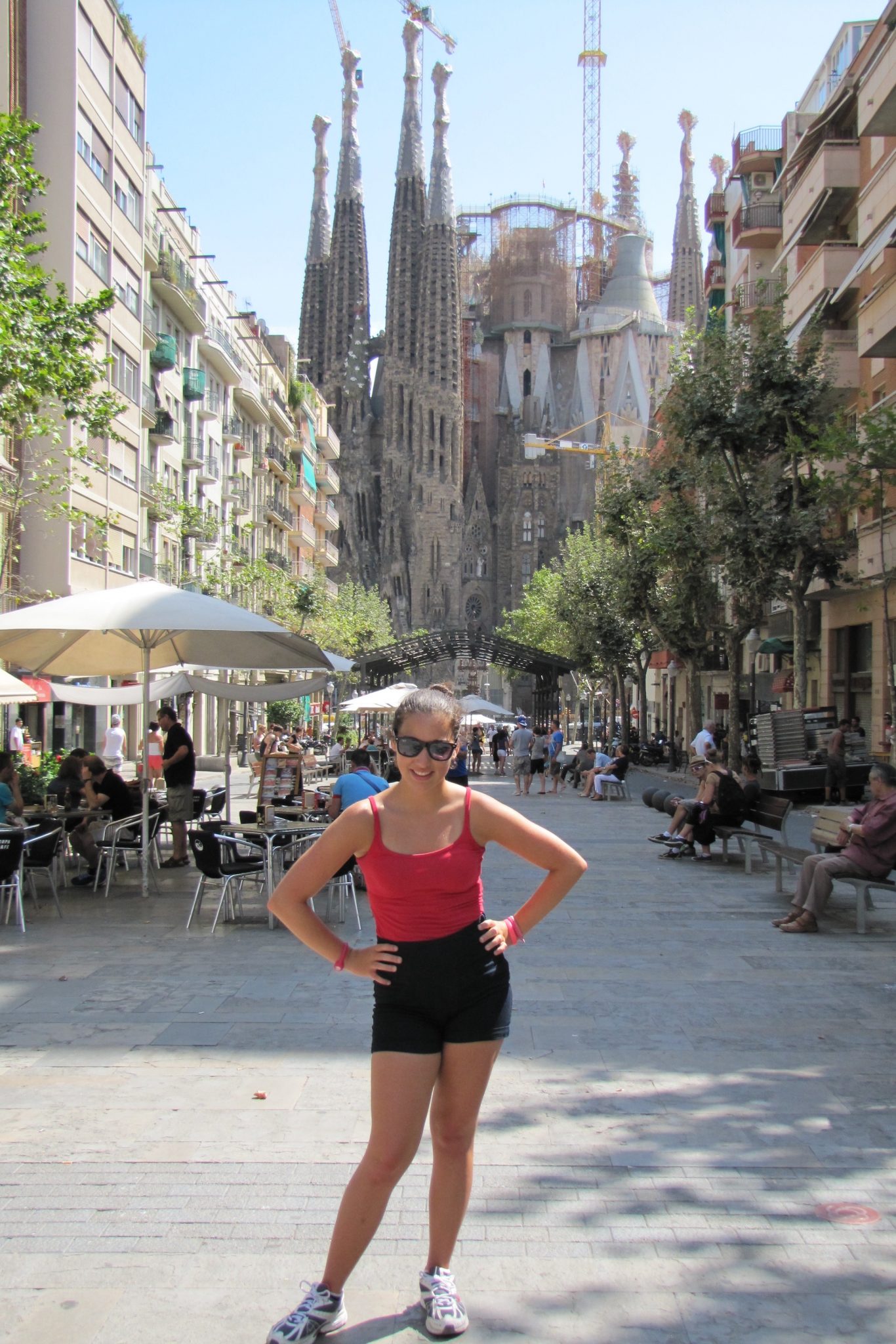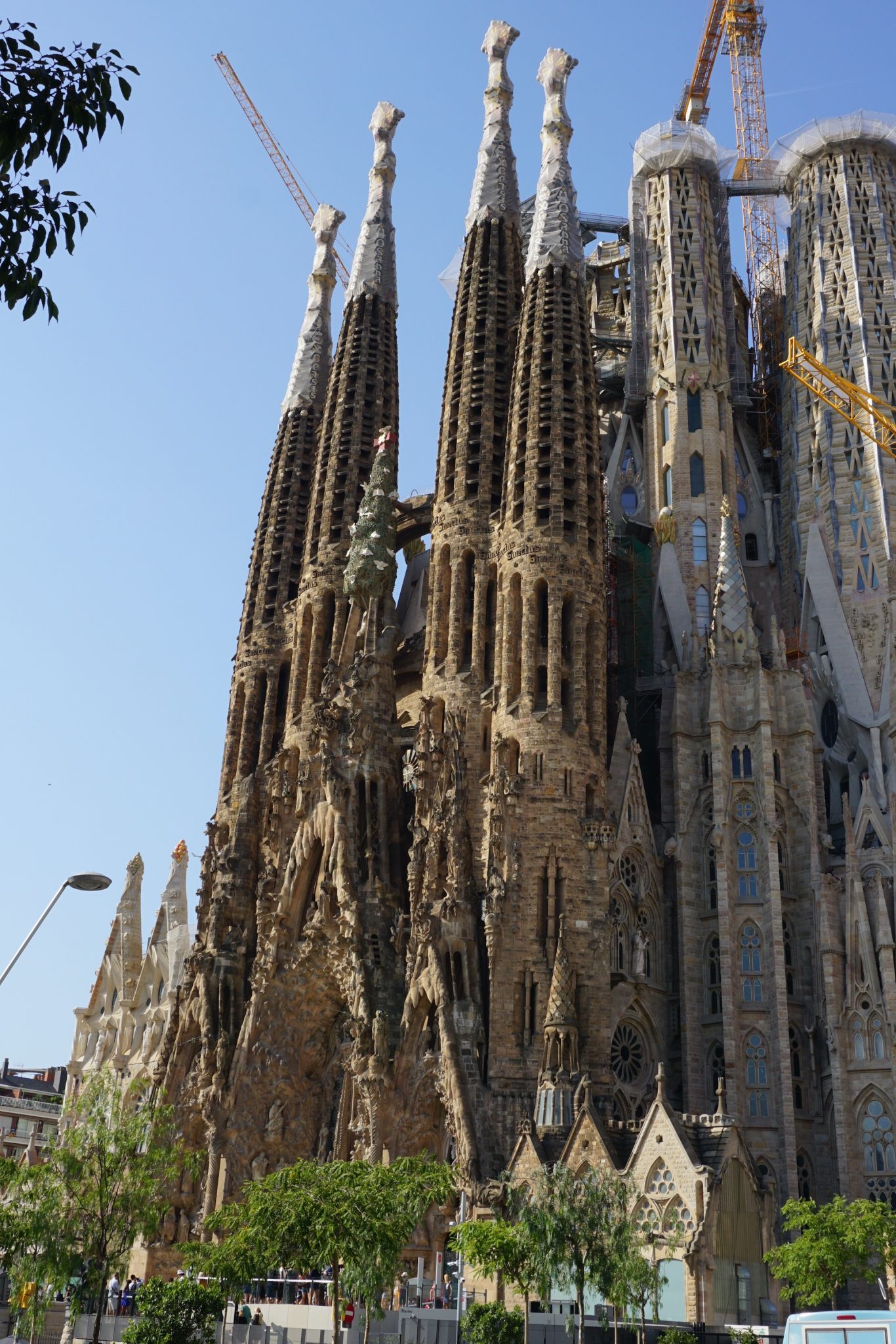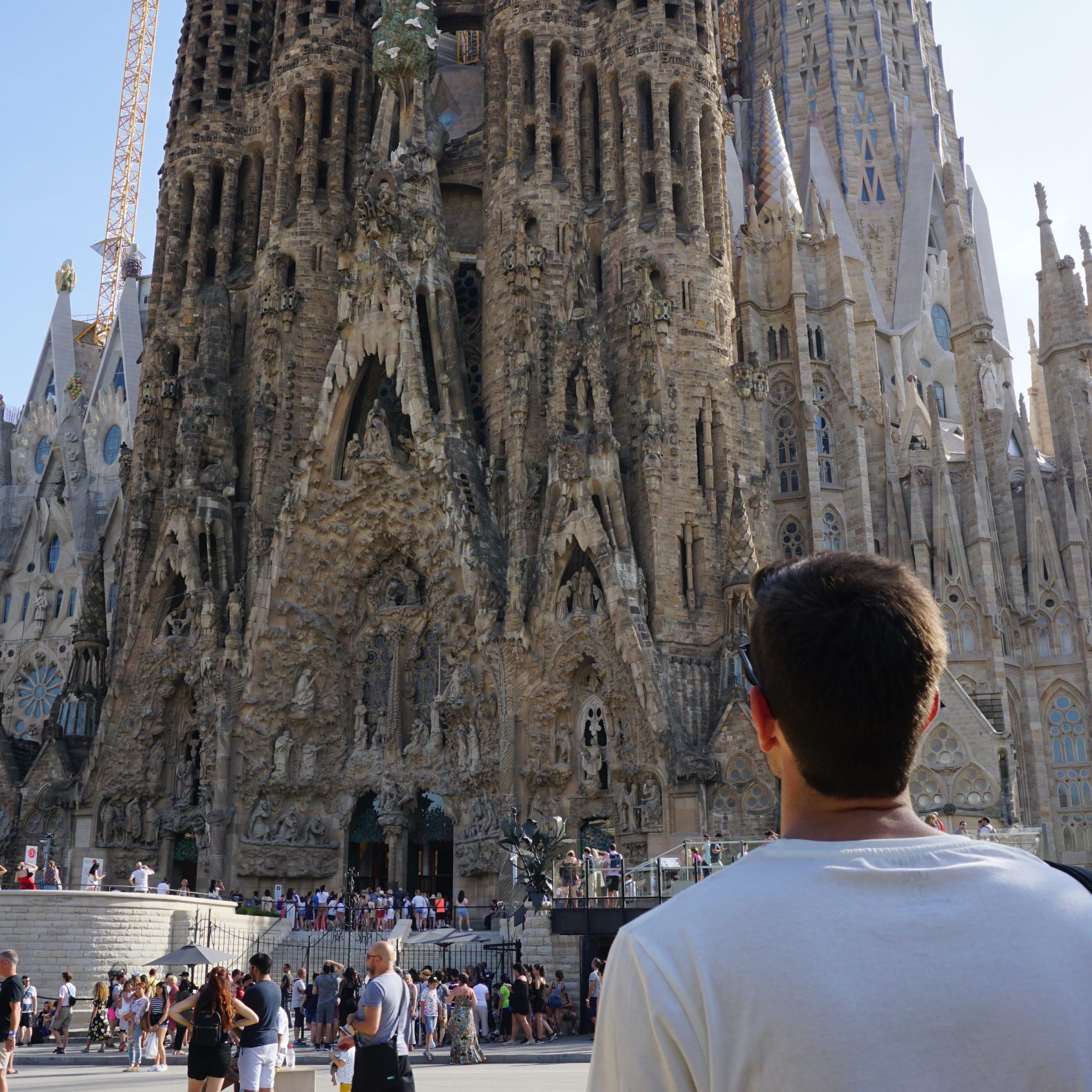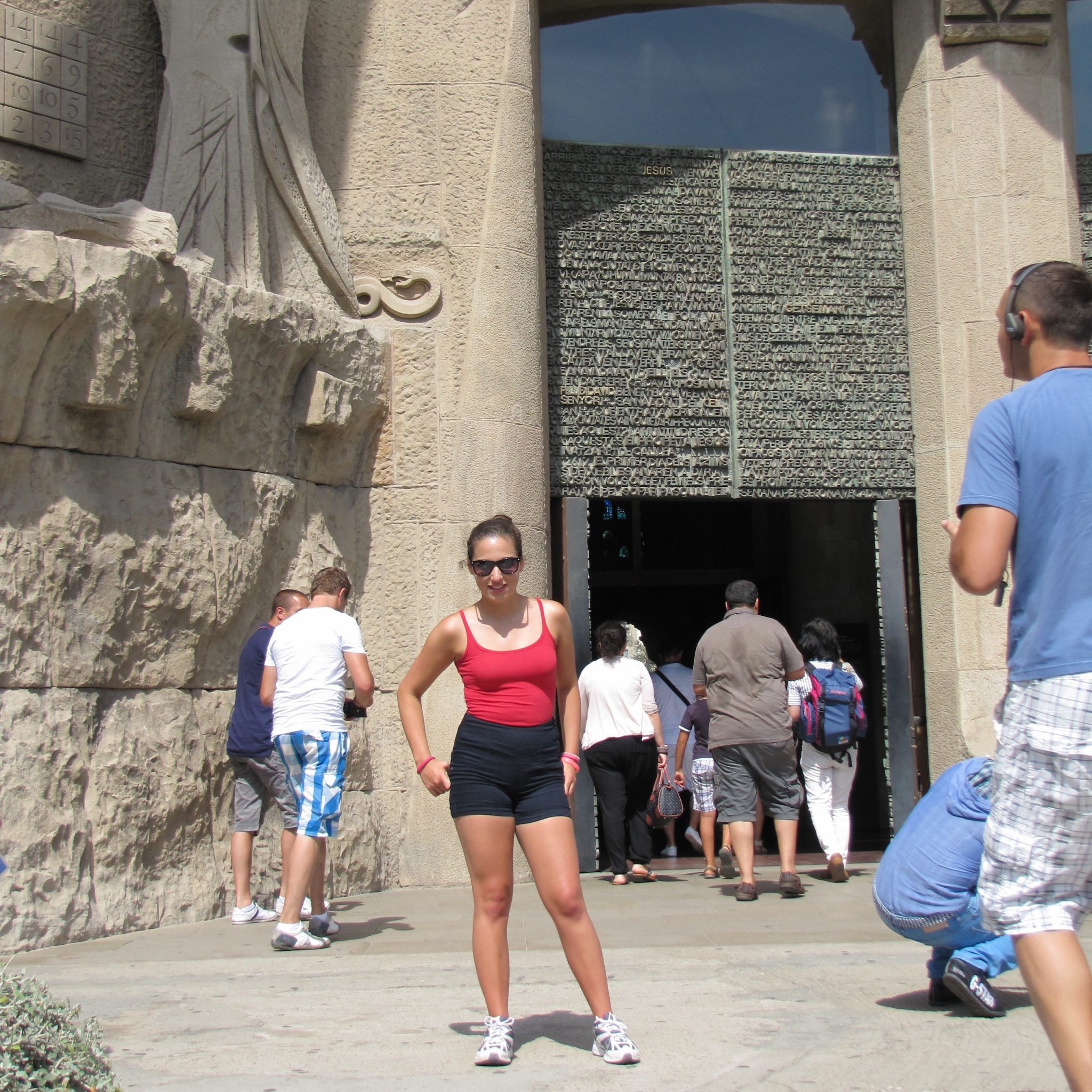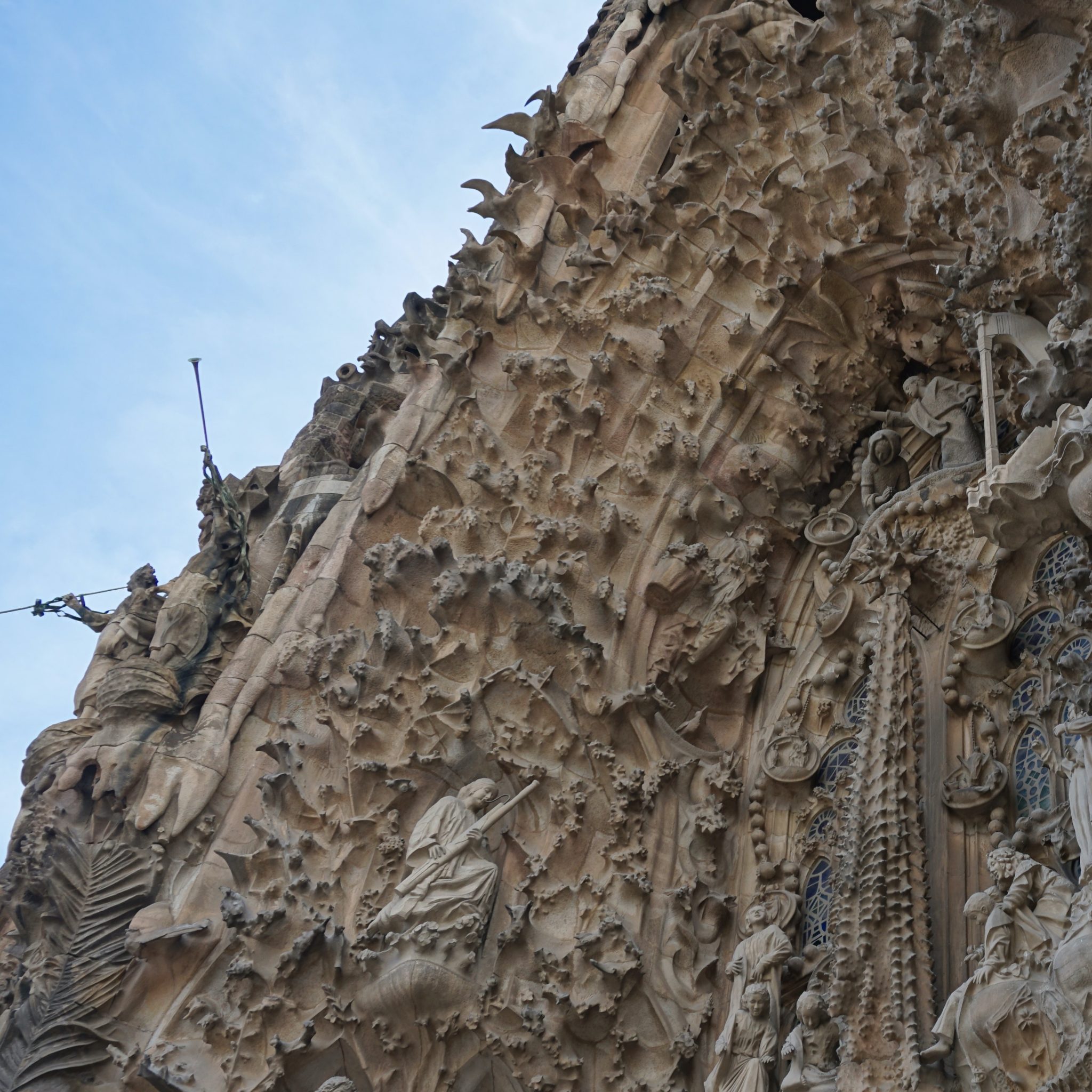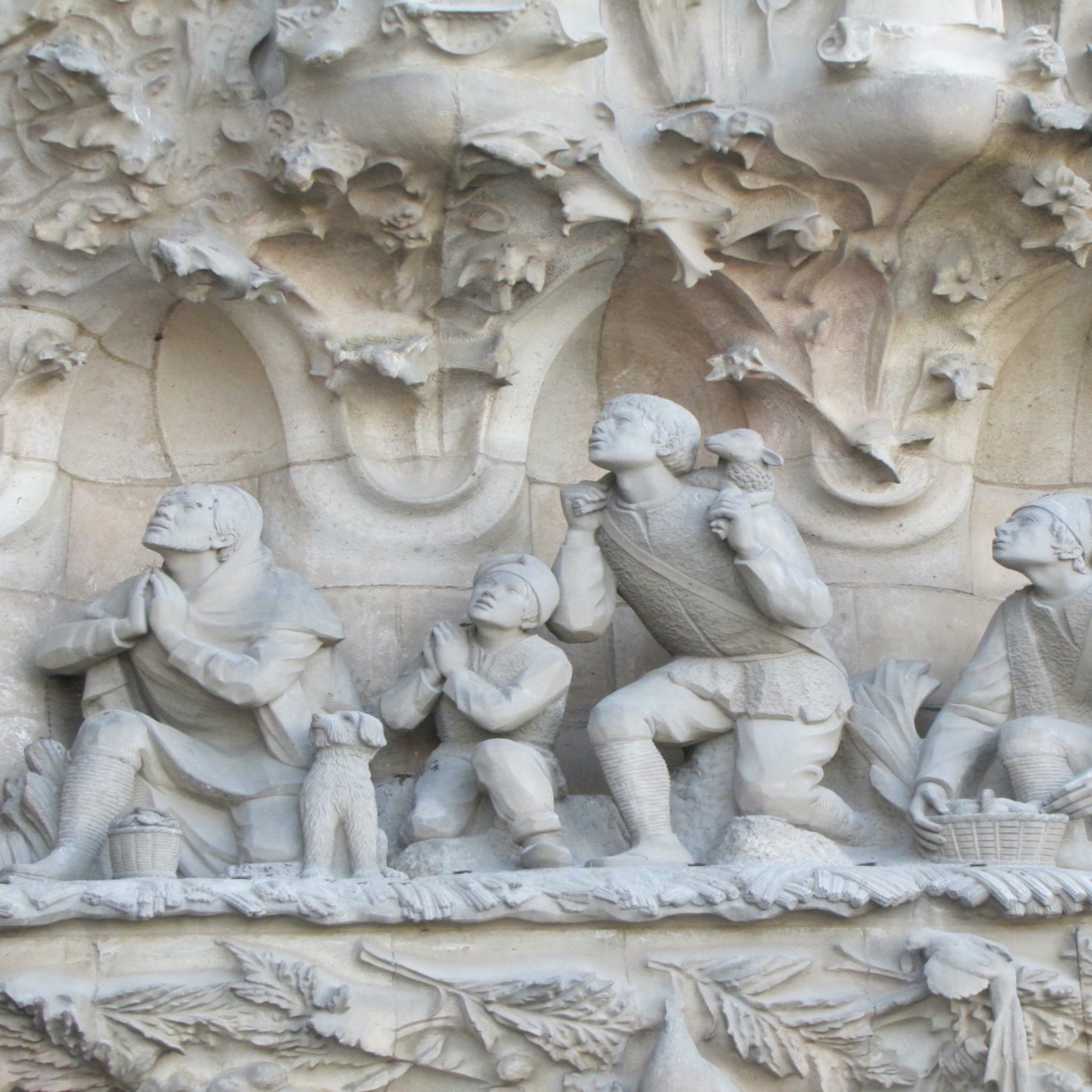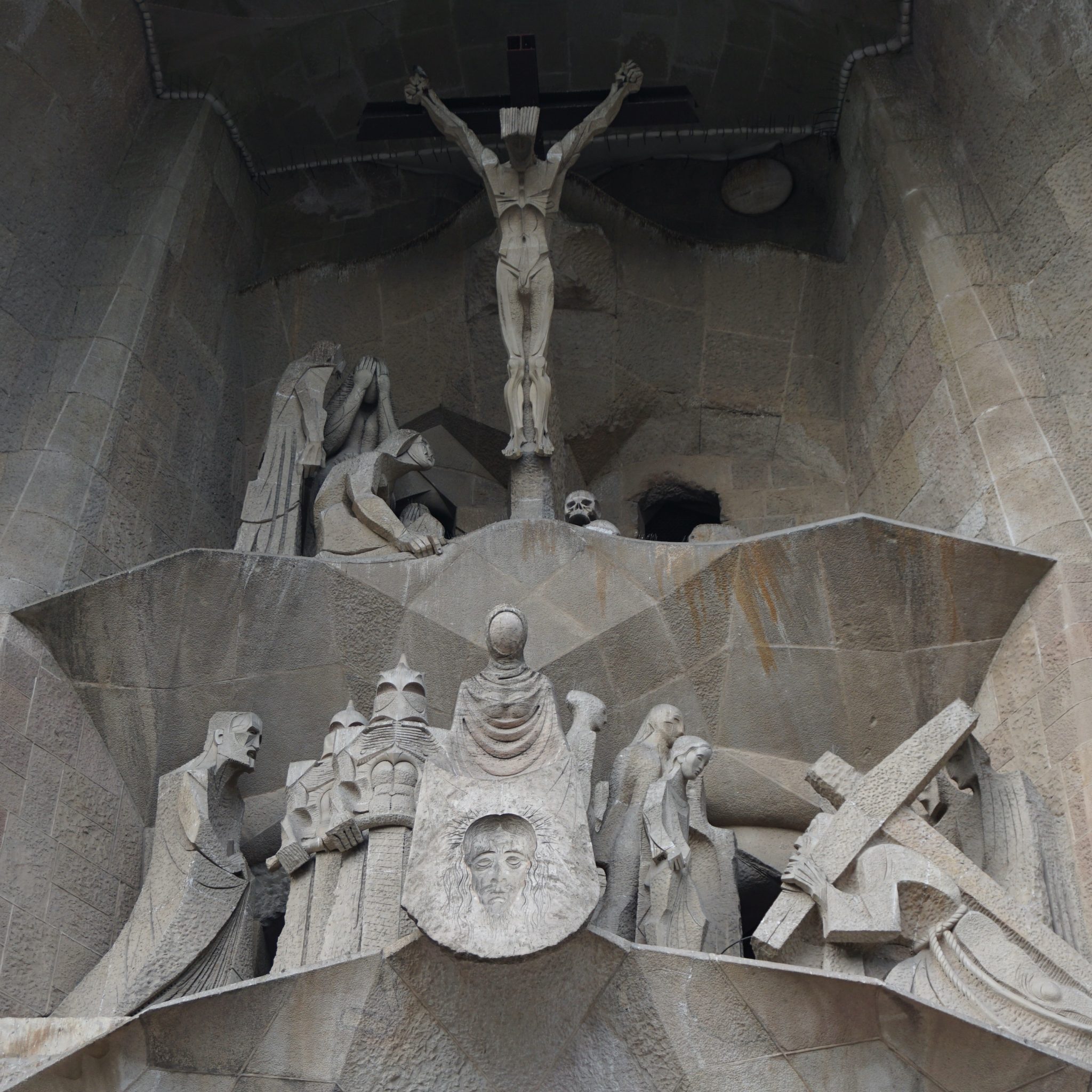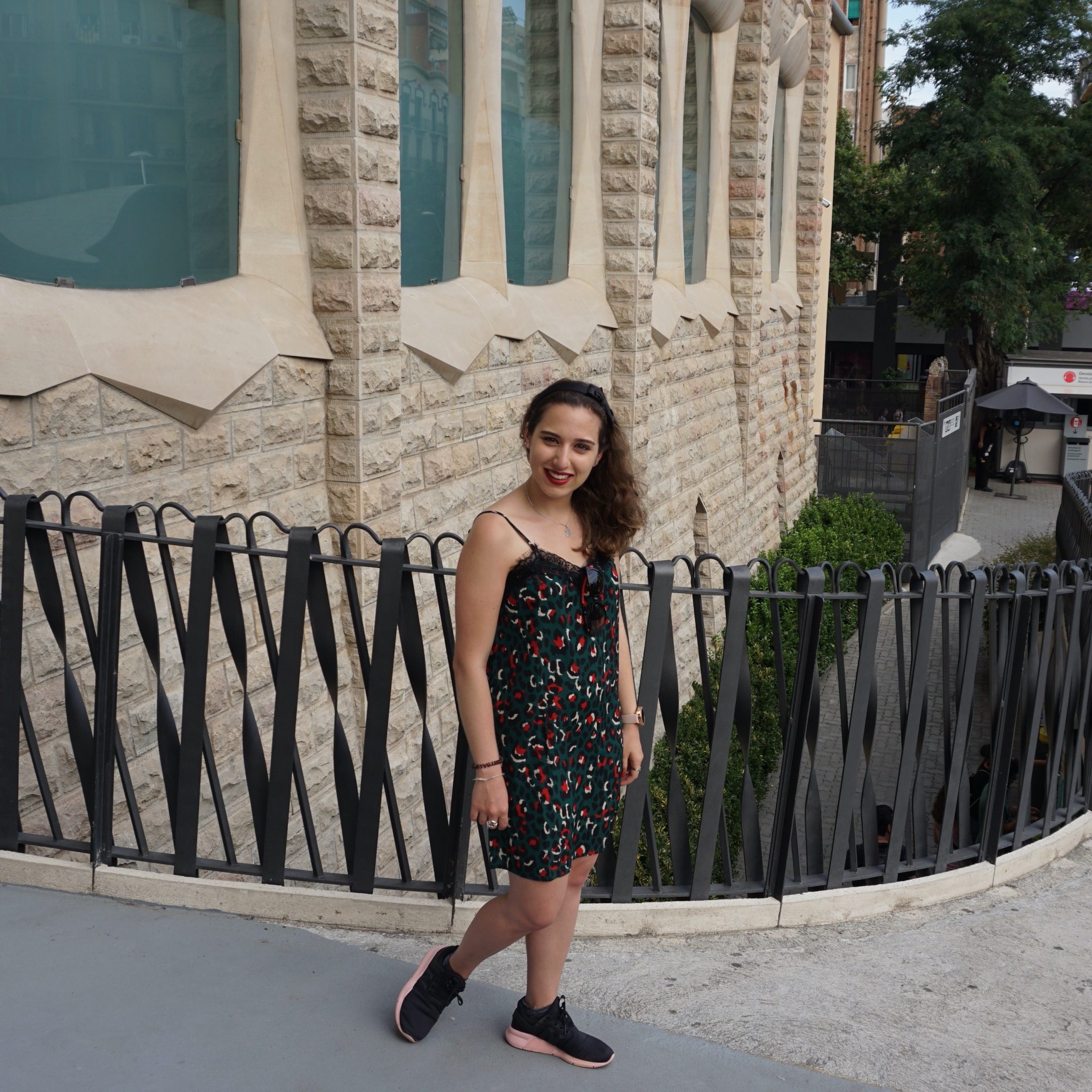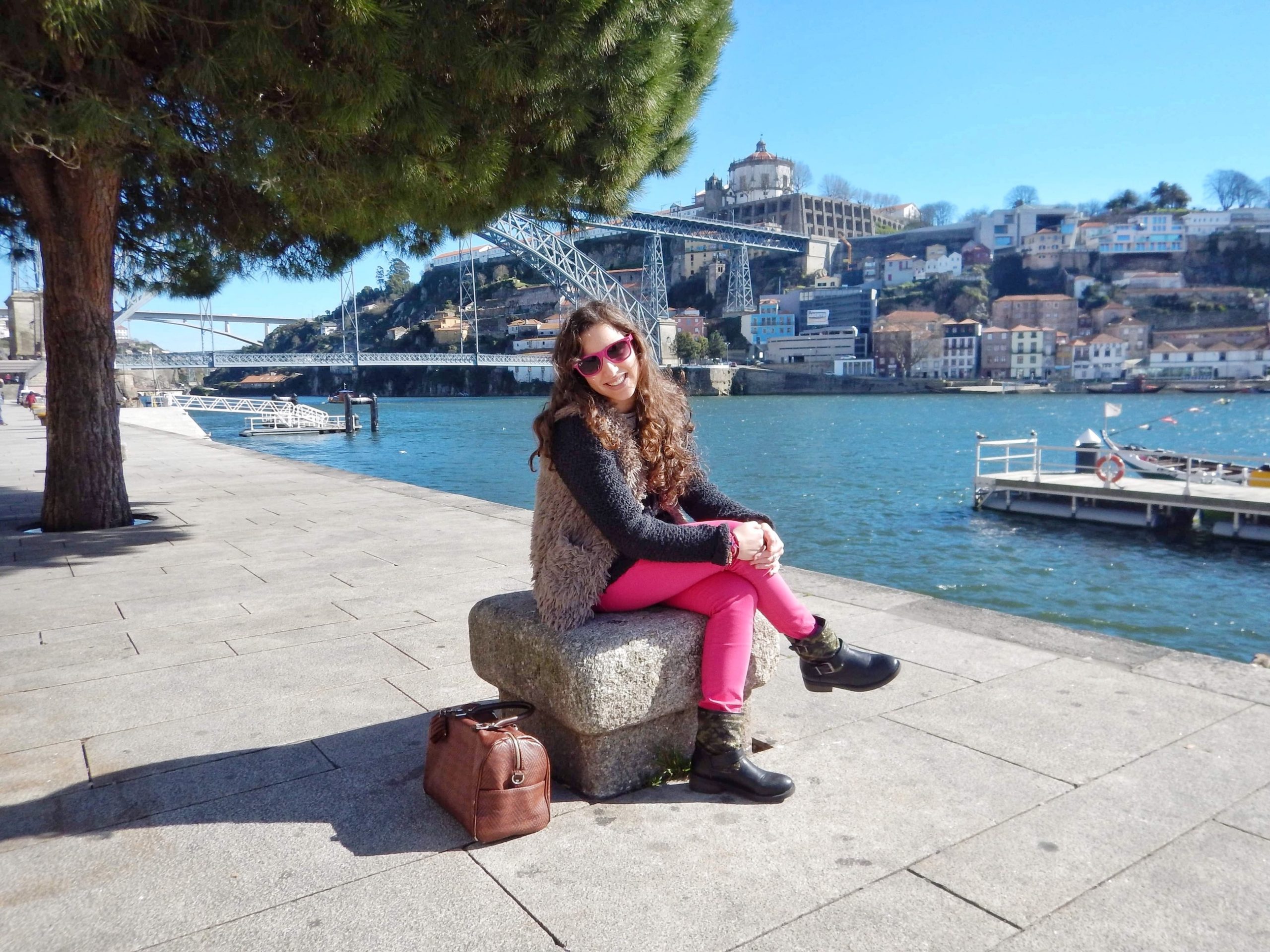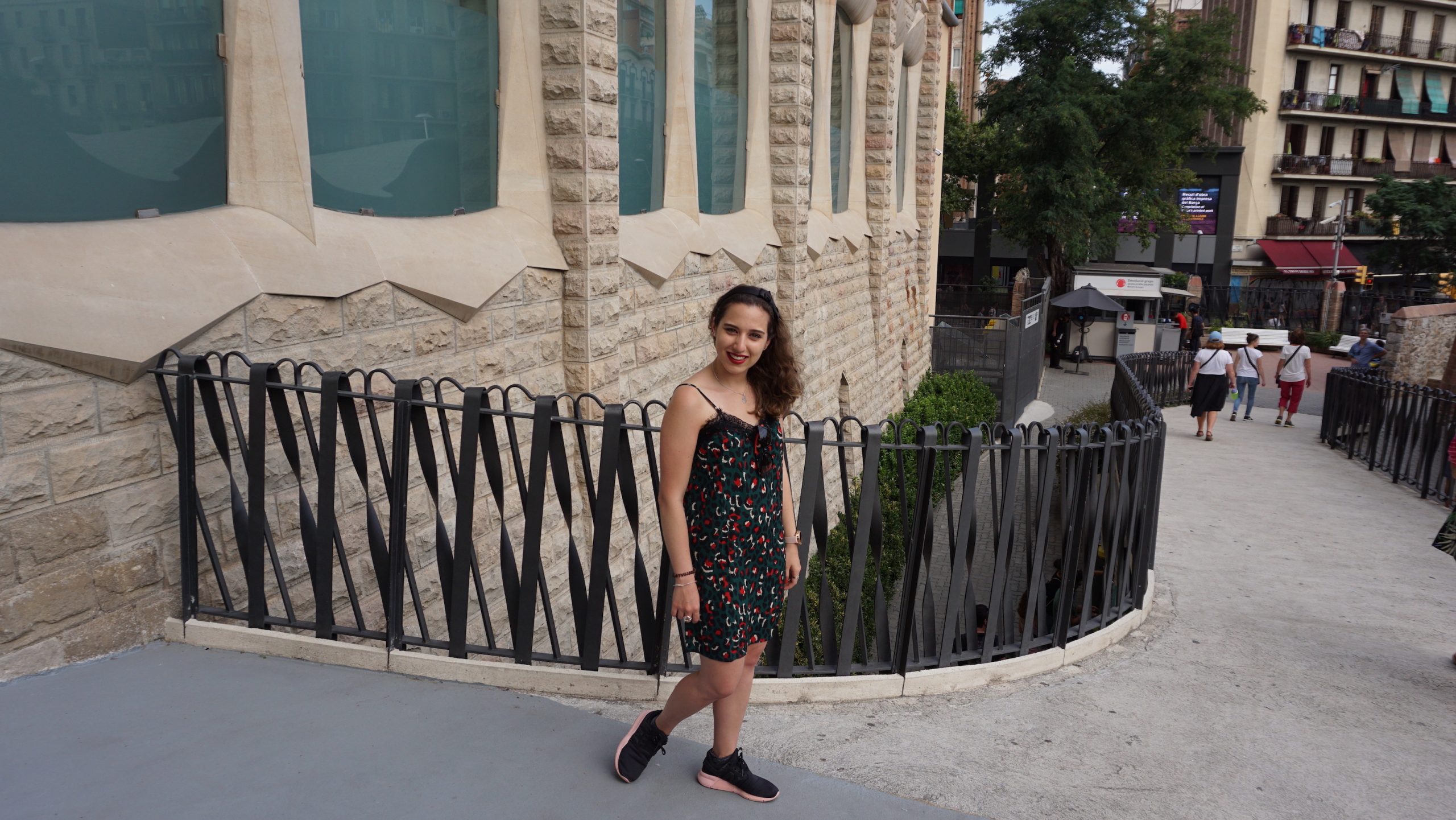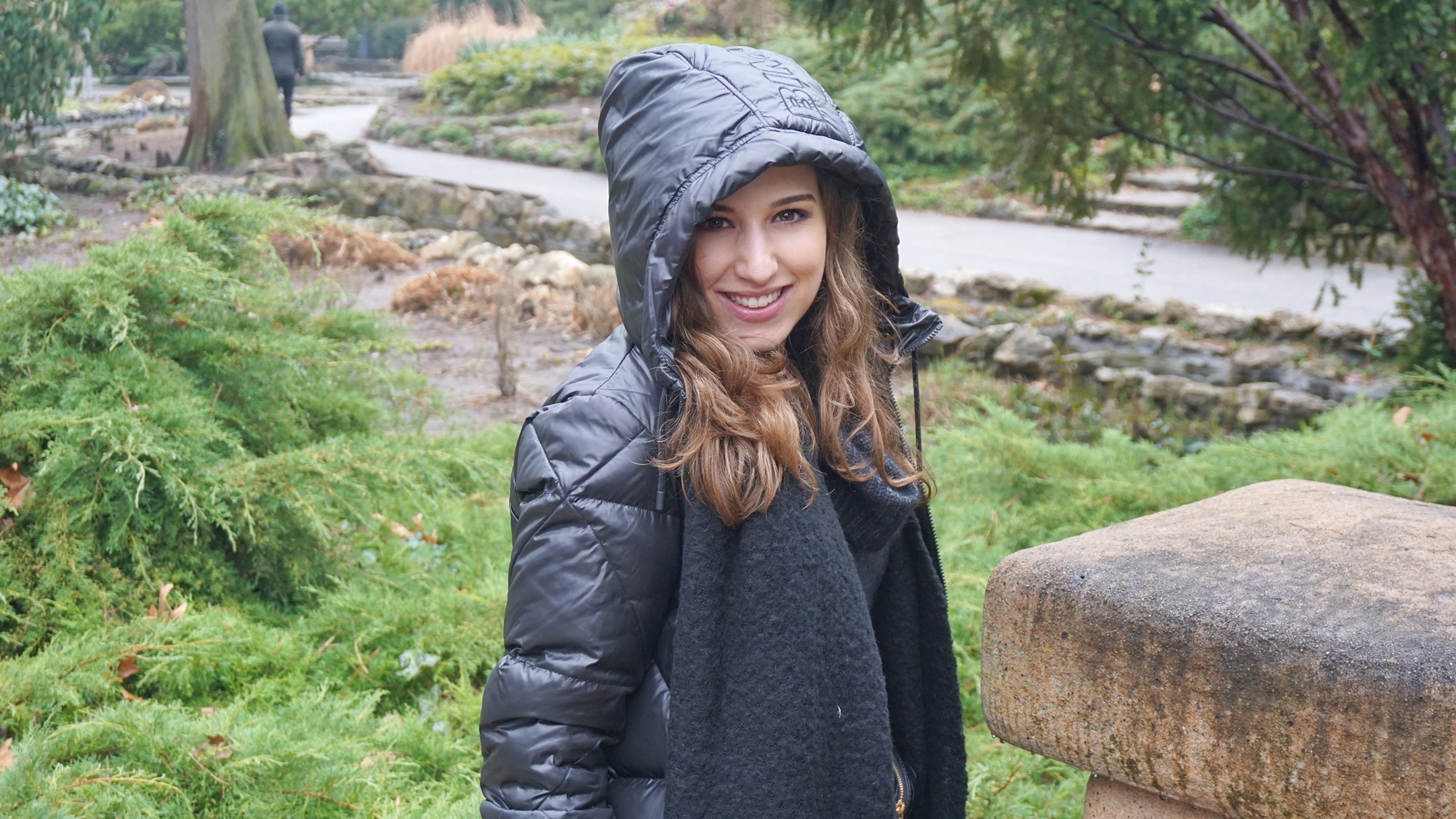The Expiatory Temple of the Sagrada Família is the least conventional church in Europe and the epitome of Catalan modernist architecture. It’s the most important monument in Barcelona and a perfect example of Gaudí’s creativity and innovation.
The history
The original design of the Sagrada Familia was in the neo-Gothic style and was created by the architect Francisco de Paula del Villar. In 1883, Gaudí was 31 years old and assumed the leadership of this work (the previous architect had some disagreements). Gaudí’s goal was to follow the project and started by building the crypt and the cloister. However, an anonymous donation changed his plans! Gaudí chose to abandon the neo-Gothic project and created a new one from scratch with an innovative aspect. He wanted this temple to be a monument to God, but also a point of reference in Barcelona.
The architect was dedicated to the work of the Sagrada Familia for 43 years, but only after 1914, Gaudí started to devote himself completely to the temple (there were no important works of his own in the last 12 years of his life). Unfortunately Gaudí had no opportunity to complete the work because he died in 1926 hit by a tram. He was buried in the chapel del Carme, in the crypt of the Sagrada Família.
After Gaudí’s death, the direction of the work was transferred to Domènec Sugrañes, his close collaborator, who ran the building until 1938. Since then, the project has been passing from hand to hand but always trying to preserve the idea that Gaudí had for the monument.
In 1936, during the Spanish Civil War, the church was attacked and suffered a major fire that destroyed Gaudí’s documents and plans. The fire also damaged the model of the church he left. From that moment on, the church is being built through inspiration in other works, Gaudí’s vision and in some plans that resisted.
The actuality
In 2005, some areas of the Sagrada Família (facade of Nativity and the crypt) were declared Cultural Heritage of Humanity by UNESCO (probably when the work is fully completed the entire building will be declared as well). In the beginning, the Sagrada Família in Barcelona needed investments and now it is fully financed by the tickets, in addition to donations and private contributions. It’s estimated that the completion of the works of the Sagrada Familia will take place by 2026. When the church is finished it will be 172.50 meters high, 18 towers and the highest church in the world. It will have a tower dedicated to Jesus, one to Mary, 12 to the apostles and 4 to the evangelists. The highest will be the Jesus’ one.
The exterior
Details in the Sagrada Família are everywhere and each one simultaneously plays a structural, ornamental and symbolic role. Outside, there are three facades in great detail, each of which reports a phase of Jesus’ life: the Nativity, the Passion and the Glory, facing south, east and west, respectively.
★ Facade of Nativity: dedicated to the birth of Jesus. It was the first to be completed and has several details related to nature such as sea turtles, insects on the leaves that decorate the doors and the tree with doves at the top that represent peace. It’s the only facade that was practically finished before Gaudí’s death. It’s the most decorated with various religious symbols and representations.
★ Facade of Passion: located in the Carrer Sardenya, in front of the square that has no pond, has a more carnal structure, as it represents the crucifixion of Jesus. This facade represent the last days of Jesus’ life, with scenes of suffering represented on the three levels of the facade. The six columns on which the facade rests are inspired by the trunks of the giant American redwoods.
★ Facade of Glory: not ready yet, it will represent the Last Judgment, death and hell of Jesus. When finished, it will be the main facade of the temple, the largest and most monumental. The front doors are already in place, with phrases from Our Father in 50 different languages.
The interior
The height of the columns that imitate trees, the colors of the stained glass that illuminate the whole environment when the light hits, the sculptures, everything was thought out in detail and is really impressive. This entire work was inspired by nature: the columns are like tree trunks, through which the rays of sunlight filter through like a forest. A funny curiosity that few people know is that the floor of the Sagrada Família is all covered in Portuguese cork.
★ Museum: On the lower floor of the Sagrada Família, there is the Museum which has models, drawings of the project made by Gaudí, furniture, photographs of the evolution of the construction of the monument, among many other things.
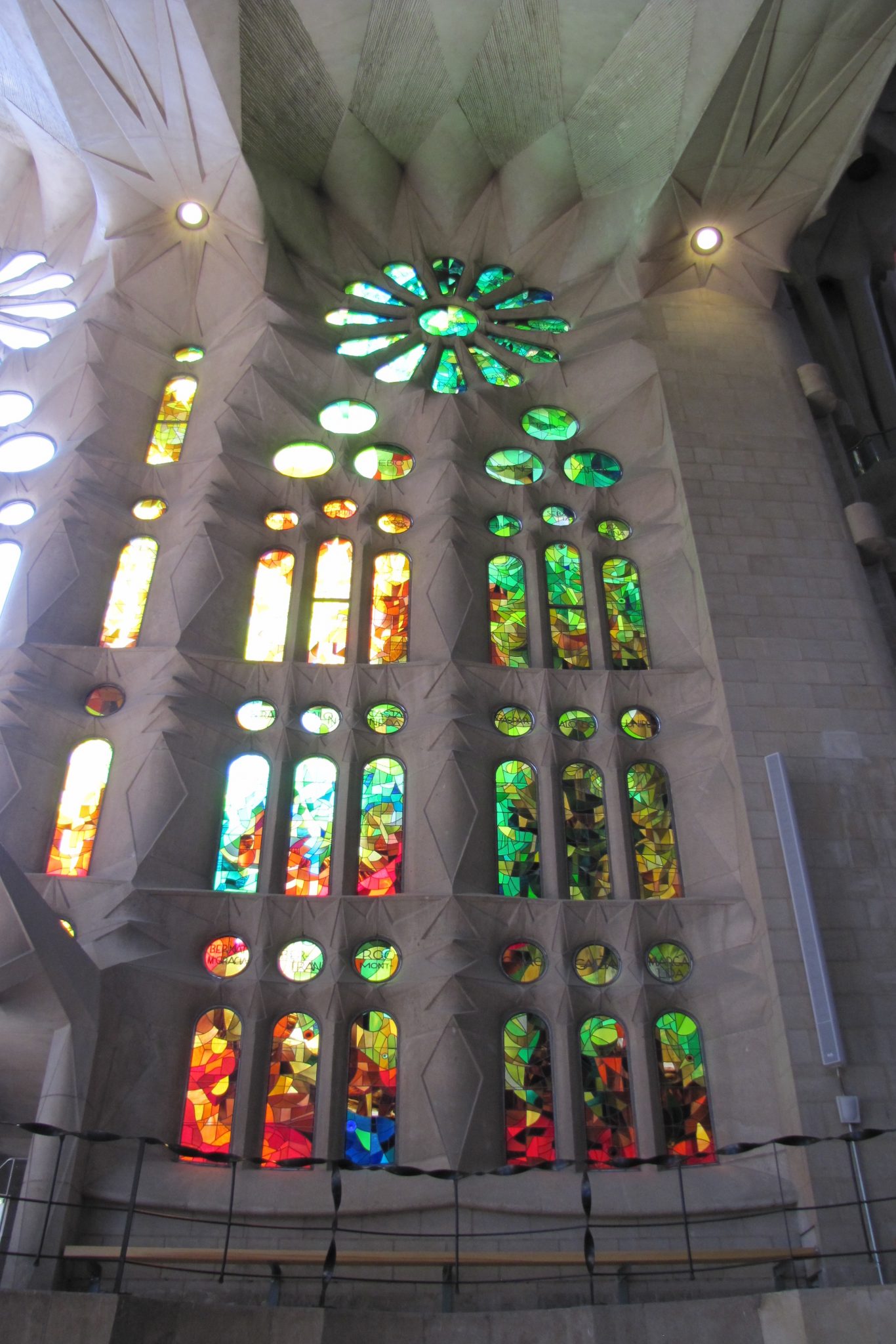
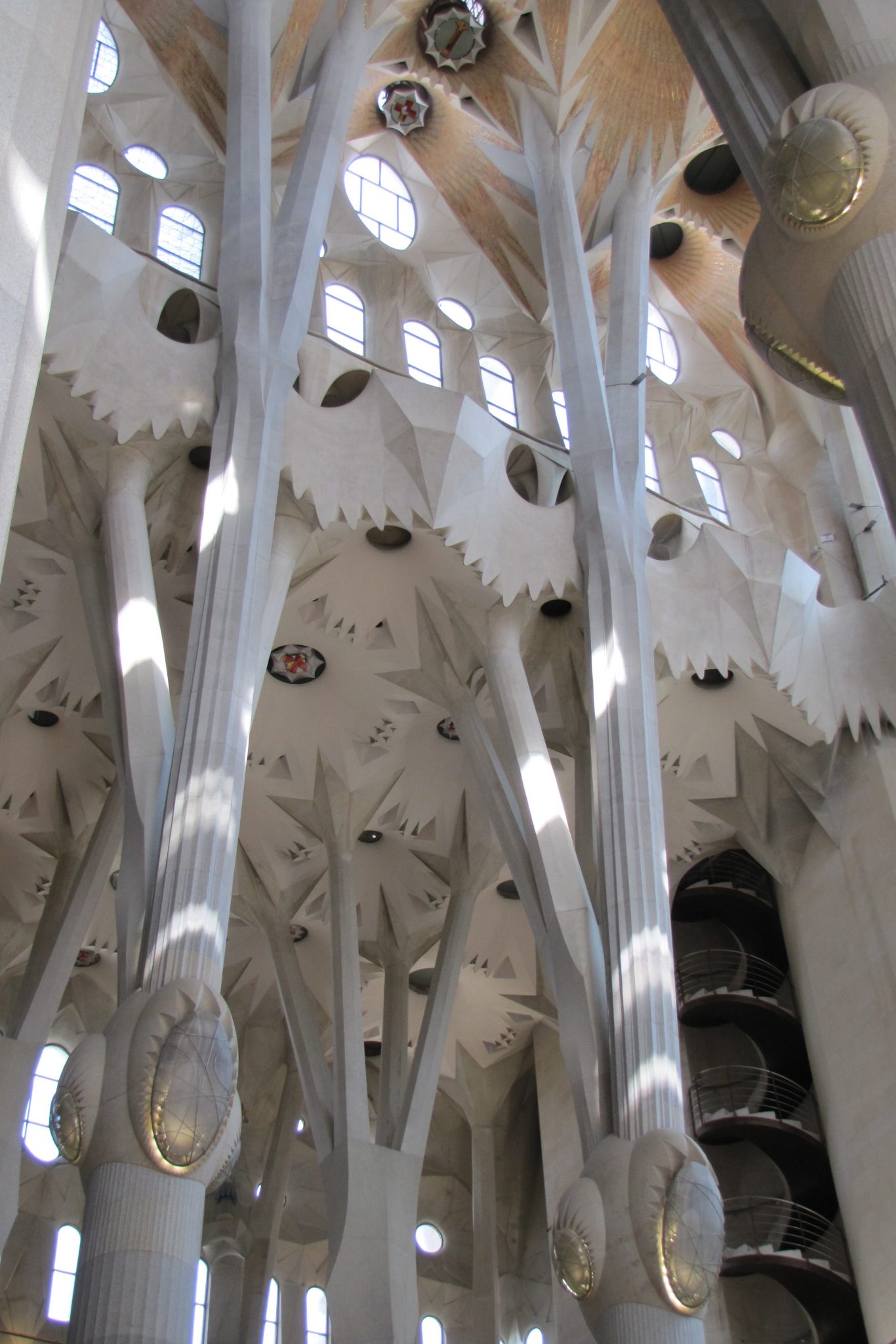
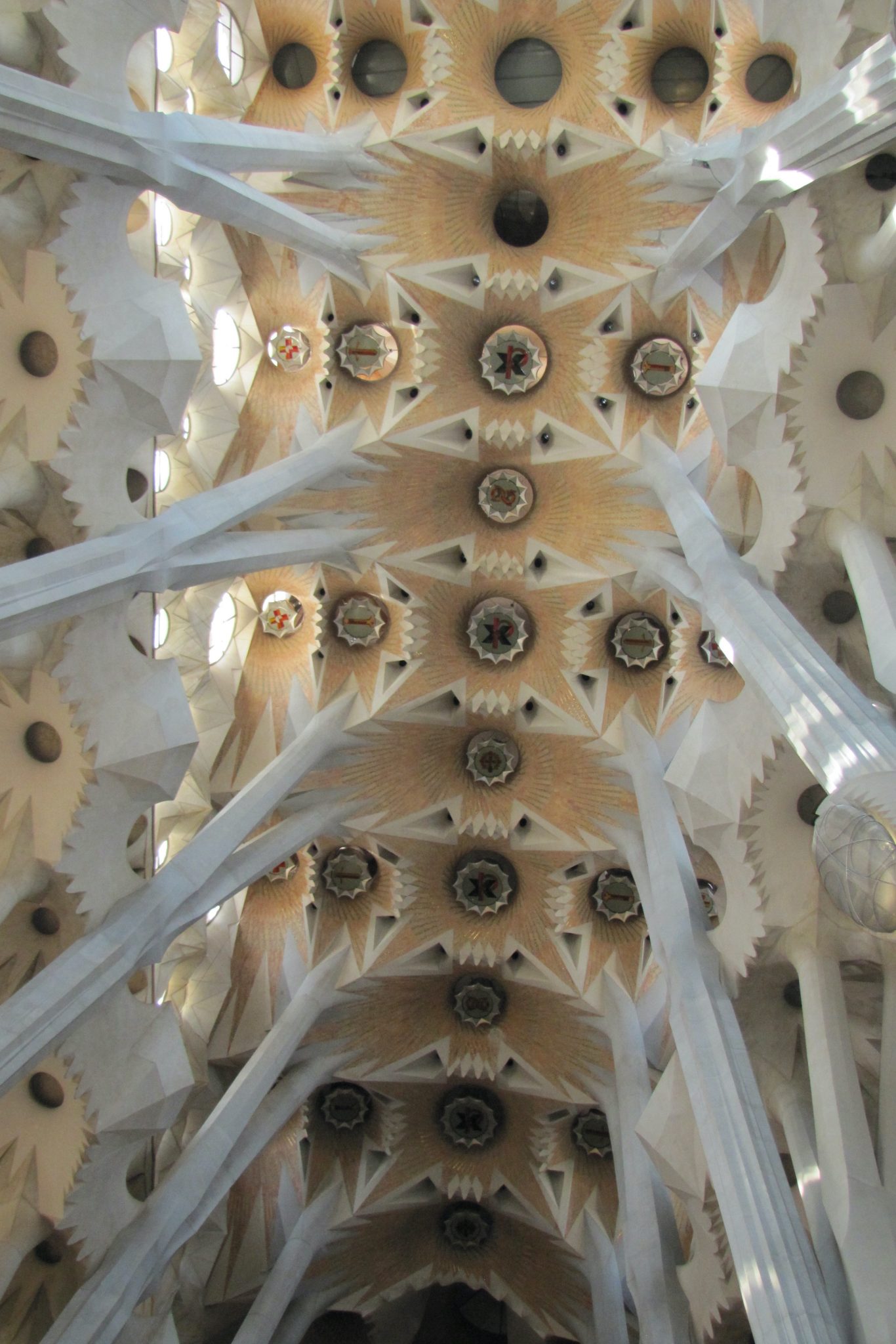
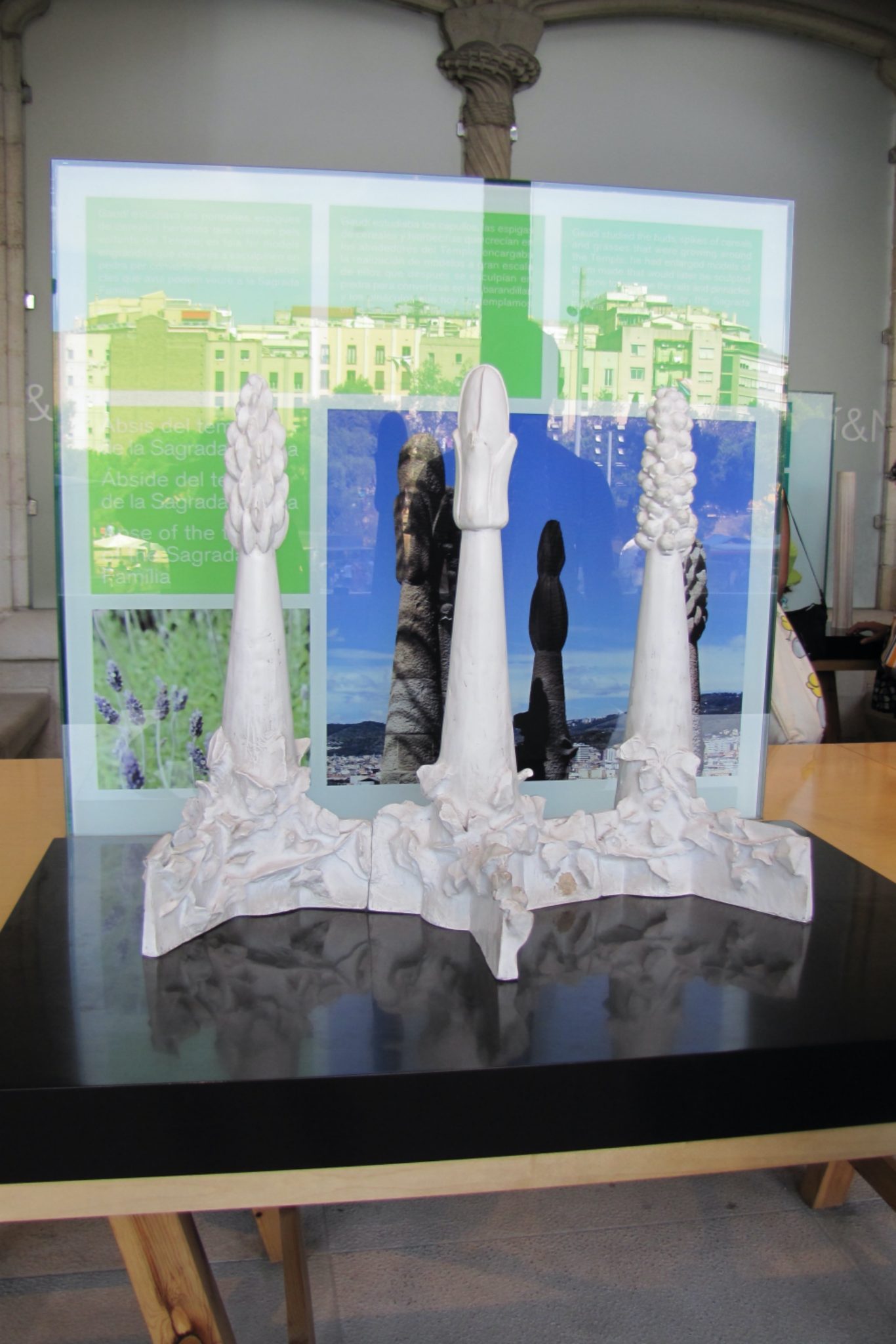
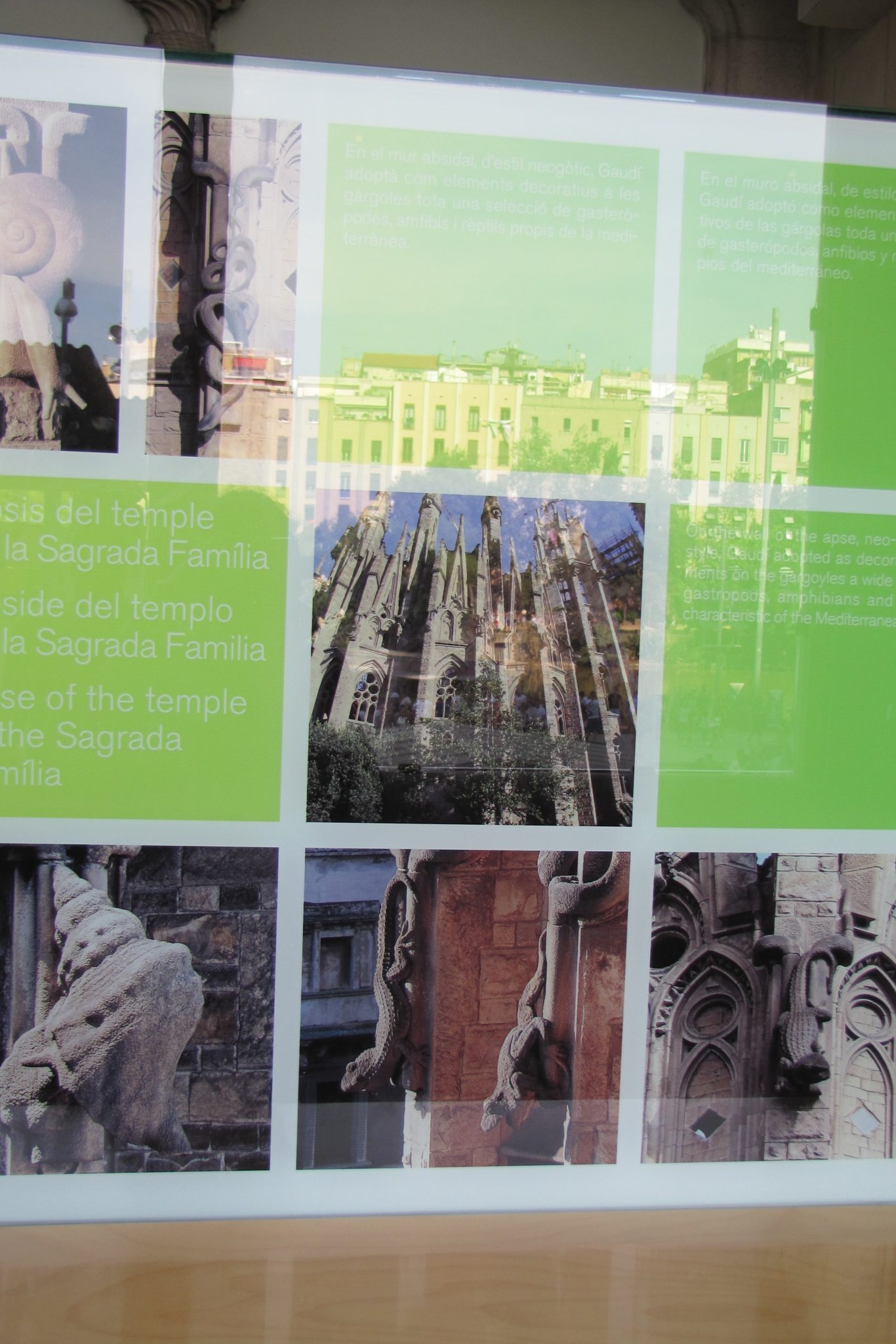
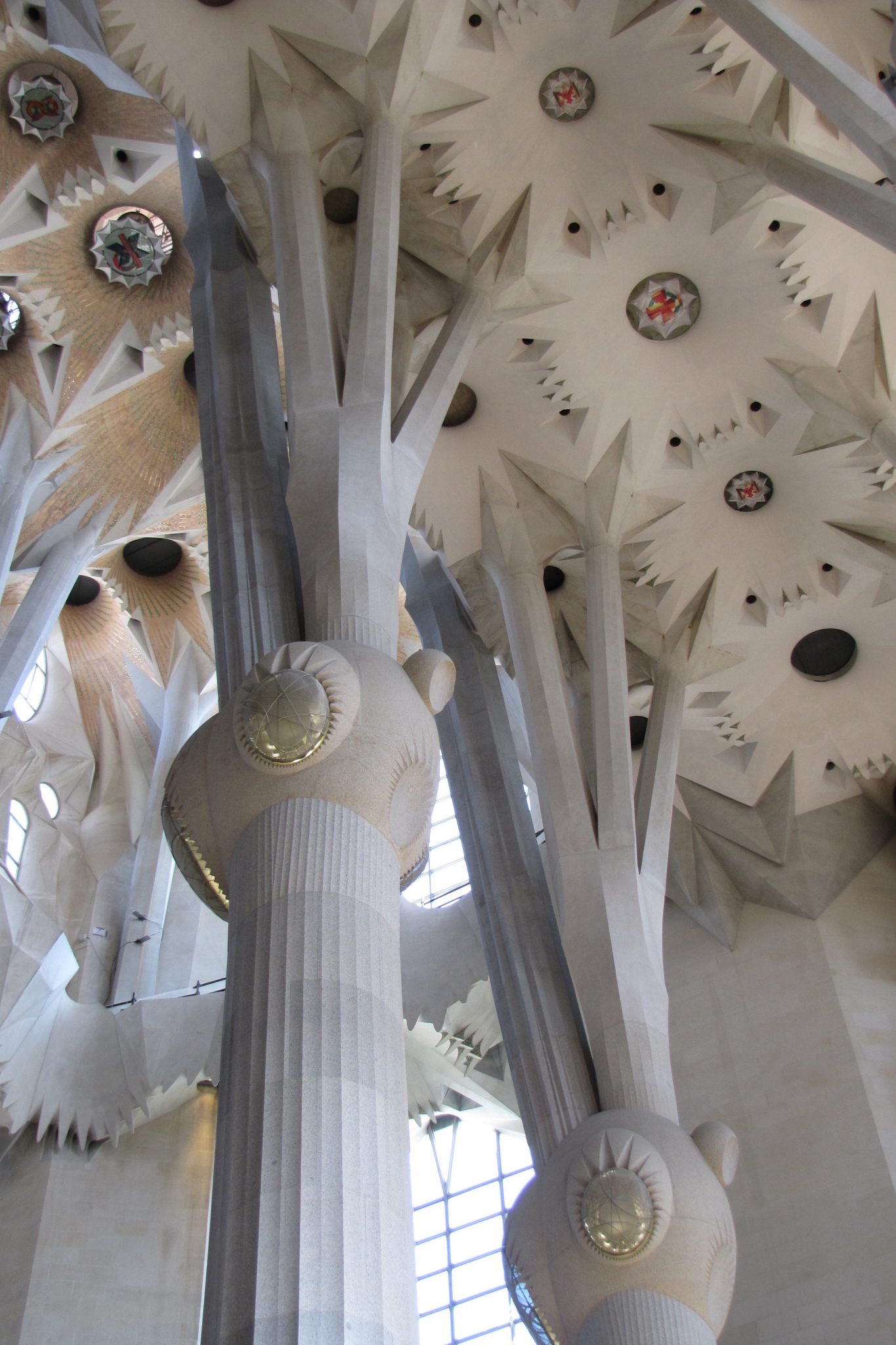
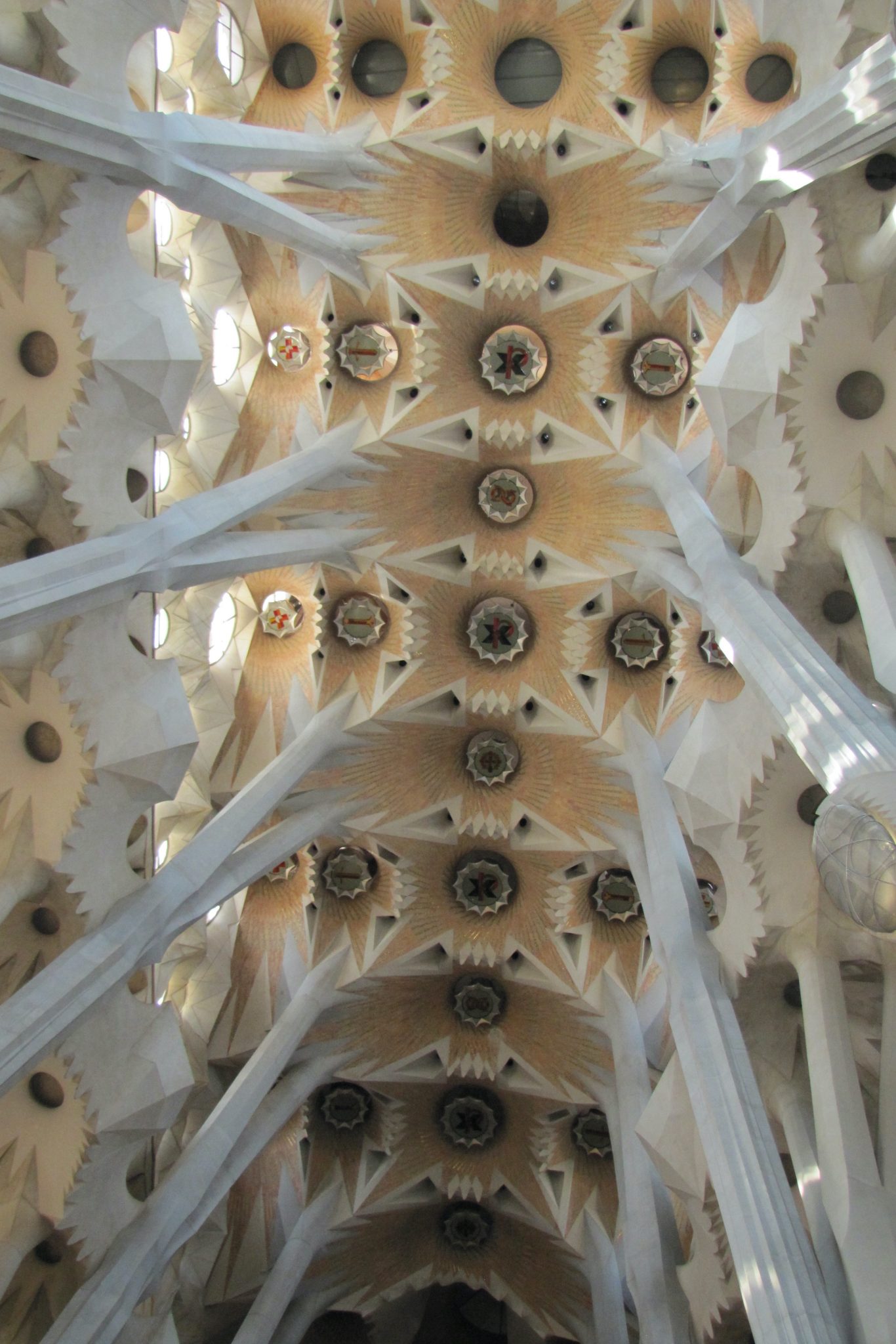
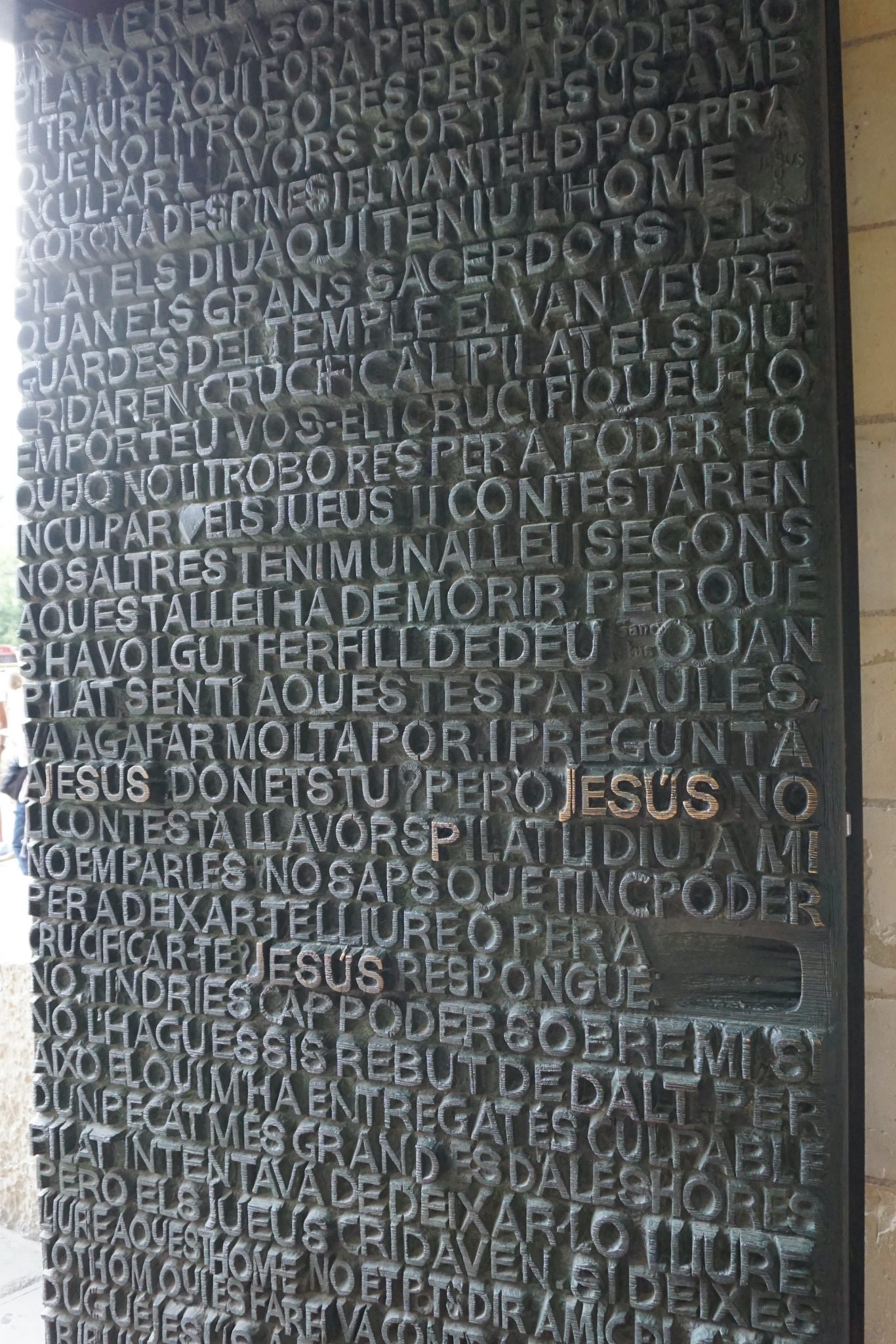
The visit to the Sagrada Família
I have already visited the Sagrada Família twice. To visit the interior of the Sagrada Família I advise you to buy tickets online in advance (otherwise you will be quite a long time in the queue!). The prices to visit vary widely and you can consult here (it’s possible to climb one of the towers but I never did – you can buy the ticket online too).
The entrance is made through the Facade of Nativity and it’s only necessary to present the ticket on the mobile phone (or printed if you prefer). The tickets have a scheduled time but it’s better for you to arrive 15 minutes early to pass security and turnstiles. Pay attention to the clothes you wear! (You will visit a church). The duration of the visit to the Sagrada Familia depends a lot from person to person but it takes at least an hour.

The Sagrada Família was undoubtedly Gaudí’s greatest work, but the architect was also involved in several others (you can read it here). Everyone who visits the city cannot fail to appreciate this monument full of meaning, energy and beauty. The visit is really essential (at least on the outside) and it’s easy to get there by metro with lines L2 or L5 and get off at the ‘Sagrada Família’ station. The first time I went there was in 2012 and the last in 2019. Surprisingly, I noticed a lot of differences in the evolution of the monument’s construction from one visit to the next.
Do you want to know more about my trip to Barcelona? Click here to read all the posts.

